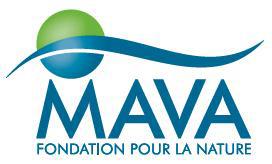This weekend two more captive-bred bearded vultures were released into the wild in Europe, this time in the Austrian Alps, in Hohe Tauern National park. A small crowd of people waited several hours for the birds (see photo) – one of the birds arrived straight from the airport in Vienna, as it had flown the day before from Spain, where it was captive-bred in the bearded vulture specialized captive breeding center in Guadalentin (Andalusia, Spain). The second bird was born closer, in the Haringsee captive-breeding unit (Austria).
Upon arrival in Hohe Tauern national Park, the birds were quickly presented and then taken to the spectacular hacking site, under a waterfall at Seebachtal (see video below).
A few days ago the third bird that had been released on the 6th of May in the in the Baronnies region of the pre-Alps in France, as part of the LIFE GYPCONNECT project (funded by the EU LIFE budget and co-funded by the MAVA Foundation), has fledged.
Simay was the last of the three young still in the hacking cove, and flew for the first time on Friday – a great flight. Clapas had done its first flight on the 25th May, and Drumana tried to follow it, a bit less successfully, as it landed several meters below, but it returned on his own on foot, including jumping over the fence, to the hacking cave, only to fly out successfully a few days later.
The three birds in Baronnies are now flying, in spite of the terrible meteorological conditions there this Spring, with a lot of rain and thunder, which do not encourage them to venture far and long. They still spend most of the time on the hacking cliff, where they come to get food, together with the local griffon vultures. The bearded vultures still have not found the bones the staff from Vautours en Baronnies have “distributed” around the site, but it will not be long.
The final release will take place in Switzerland next weekend (17th June) – we will keep you posted All birds released were tagged with a GPS transmitter, and the VCF in collaboration with local partners will monitor and follow their progress closely.
The chicks released across Europe, are originated in the captive breeding programmes and network coordinated by the VCF under mandate from EAZA (European Association of Zoos and Aquaria).





